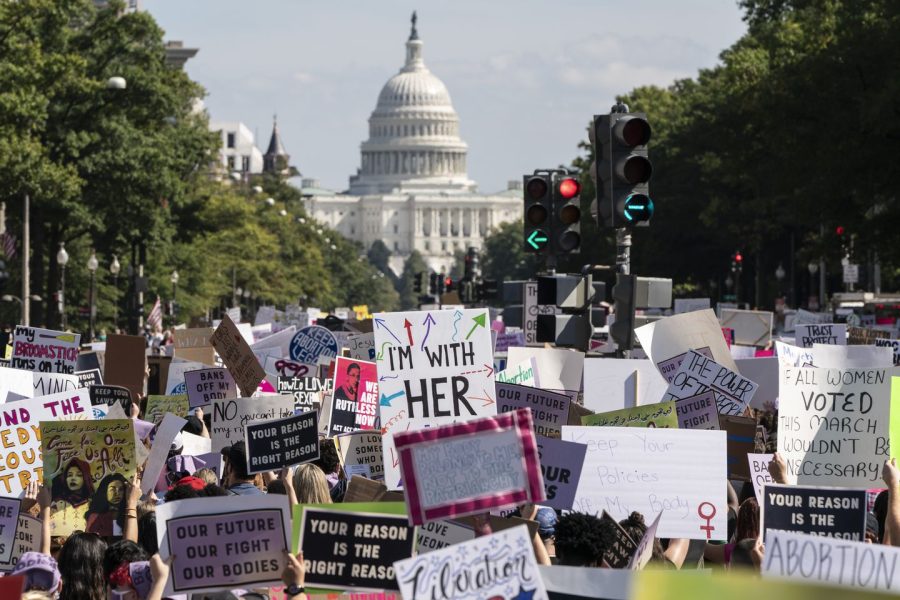Why the Women’s March still matters
Women’s March protestors take to the streets of Washington D.C to stand up for reproductive rights.
October 15, 2021
Nearly a month after a Texas law banning abortions after six weeks of pregnancy was introduced, this year’s perfectly timed Women’s March took place. On Oct. 2, 2021, nearly five years after the last protest, women and allies gathered in all 50 states, participating in more than 650 marches nationwide.
Being held for the first time in Washington D.C since Jan. 2017, this year’s march centered around total reproductive freedom, protesting the recent onslaught of abortion restrictions. The year 2021 has seen some of the most restrictive abortion laws including Texas’ Senate 8 bill, banning abortions six weeks after gestation, and offering rewards of up to $10,000 to citizens who are able to sue anyone who helps someone get an abortion after that time period. Outraged at the Supreme Court’s lack of intervention through the protection of Roe. vs Wade, citizens took to the streets to march for “The Rally of Abortion Justice.”
The abortion debate has polarized American politics like no other social concern. Both widely debatable and controversial, there are becoming fewer and fewer cases among American citizens where individuals are able to find common ground with those of opposing viewpoints. Before the Roe vs. Wade law was introduced in 1973, women were able to find unsafe ways to terminate their pregnancies such as infliction of trauma on the abdomen and even drinking toxic chemicals such as bleach and turpentine.
According to the World Health Organization, over 45% of all abortions are classified as unsafe, especially in developing countries.
“Physical complications of unsafe abortion include hemorrhaging, infection, sepsis, peritonitis and trauma to the cervix, vagina, uterus and abdominal organs,” said WHO. “One in four women who undergo an unsafe abortion are likely to develop temporary or lifelong disability requiring medical care.”
Having access to abortion as well as unbiased education about each choice that a woman is presented with while dealing with an unwanted pregnancy is the ideal, highest possible level of sexual and reproductive care in today’s modern society. Banning abortion will not stop women from finding access to unsafe, “back-alley” methods, but will instead increase maternal injury and death rates.
Out of the entire state of South Dakota, the Sioux Falls Planned Parenthood location is the only place in South Dakota where women can get an abortion, leading to possible long travels as well as 72 hour wait periods and mandatory counseling in order to solidify your decision. For families at or below the poverty line, this possible week-long trip across the state just isn’t realistic.
Sioux Falls was able to host a Women’s March of their own, hosted and directed by Planned Parenthood South Dakota. Standing in solidarity with those in our nation’s capital, South Dakota women were able to create a statement for Governor Kristi Noem. Noem vowed to make certain that South Dakota had the “strongest pro-life laws in the books” while in turn banning telemedicine abortion appointments. Sending shock waves through the state, women sent a message that they refuse to take a step back in the ongoing fight for reproductive freedom.








